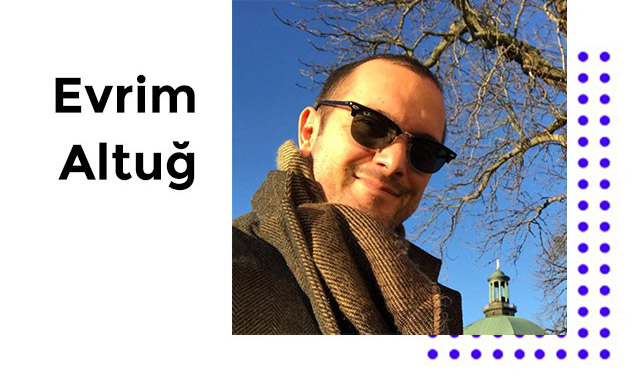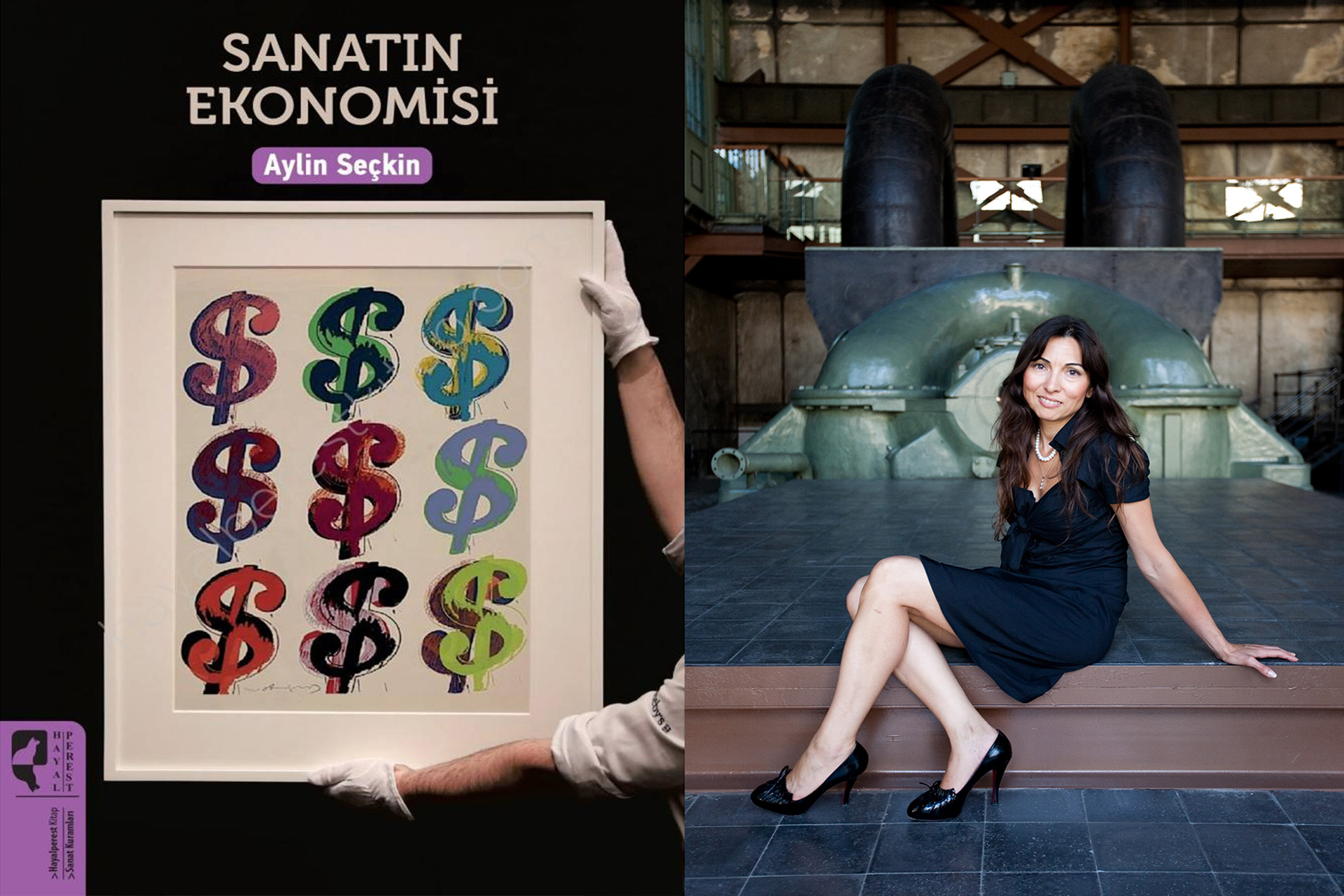
Prof. Aylin Seçkin, who teaches at Istanbul Bilgi University, delves into the ‘Economics of Art’ in her same-titled book. We had a chance to discuss the book with Seçkin right before the new season. The book serves as a compass in its respective field for collectors, artists, spectators, gallerists, and curators for a wide range of topics from the post-pandemic arts and culture industry to the dynamic landscape of arts and culture in Turkey, as well as the art of pricing artworks, with academic statistics.
As the Covid-19 virus continues to affect the world, it also shapes the developments in an unsettling way. It has undoubtedly infected the cultural industry, as well. This, most concretely, translated into the postponement or cancelation of many thematic, traditional or periodical activities. Spectators have almost forgotten the pleasurable details of experiences aimed at mass audiences, while digital broadcasting and gaming platforms are probably the biggest beneficiaries in this process. However, the panels, billboards and streets are once again covered with announcements of concerts, exhibitions, conferences, and fairs, which is good news. Masks, social distancing, hygiene, HES codes, and PCR tests, on the other hand, have suddenly become an indispensable part of our lives. In this period, the countdown to a reunion with audiences speeds up through new cultural investments in Istanbul such as Istanbul Modern, Atatürk Cultural Center, İş Sanat Photo Museum or the Golden Horn Shipyard.
An intriguing work that demonstrates the ‘big picture’ has now been introduced to the readers to explain the things that happened during this period, as we have attempted to summarize above. The academic and economist Aylin Seçkin’s book ‘Sanatın Ekonomisi’ (The Economics of Art) has been published by Hayalperest Kitap publishing house under the title “Art Theories”. Prof. Aylin Seçkin teaches at the Economics Department of Istanbul Bilgi University. Drawing on the academic surveys conducted in Turkey, the book explains the economic system that functions in the background when an artwork, as a ‘commodity’, reaches a collector, leaving an artist’s workshop, and is sold following handovers through the auctions or galleries.
The book contains numerous current topics such as ‘The Art Of Pricing Artworks’, the fast-paced trend of the Turkish art market from 1989 to 2019, ‘Blockchain and NFT’, and the post-pandemic art market, while delving into the roots of the compulsory halt in the world from 2019 to 2020. One of the reference activities for Seçkin’s book, which now is available in libraries as a source of reference in its field, is the Istanbul Contemporary Art Fair, which had its 13th edition in September 2018.
The fair will have another kickstart in Tersane Istanbul in October with a focus on Russia as a guest country/market. At this point, Istanbul re-emerges through the exhibitions such as Art Weeks Akaretler, BaSE, seasonal exhibitions that keep launching one after another, as well as those exhibitions arranged in museums for fresh graduates, together with the new economy born with the ‘New Season’. We have not even mentioned the countdown to the building of AKM, which underwent restoration under the auspices of the Turkish Presidency; the pacing completion process for Istanbul Modern as it awaits its new home in Fındıklı; the joint investments in a contemporary art gallery in Piyalepaşa; the soaring activities in Bomontiada through the Neş’e Erdok exhibition, and the curiosity-sparking outcome of the Fındıklı Mimar Sinan Museum.
Seçkin explains what kind of a future awaits us under the light of data reinforced with statistics, with a focus on Turkey’s recent art history, while stating that “artistic experiences will turn into important ‘leisure activities’ in our country in the near feature when digital exhibitions, games, entertainment and digital platforms are fostered, and virtual and real art environments have a crossover.”
“Arts organizations in Turkey have not been able to catch up with the digital revolution yet,” warns Aylin Seçkin, who notes that such organizations can employ new methods by using social media to interact with the visitors more and in better ways.
Prof. Seçkin also argues that one should not deny the impact of social media on the fulfillment of the demand referred to as ‘trend production/trendsetting’, and on creating a profile of art audience in Turkey:
“Considering the numbers indicating social media use in Turkey, one can argue that works that stand out on social media draw the attention of artists and art enthusiasts more quickly. On the other hand, artworks referred to as “blue chip”, and those alike, are seemingly high in demand not only in Turkey, but also in the rest of the world as major collectors set/create a trend in art, as well. The role undertaken by art critics in the 60s and 70s is now taken over by HNW (high-net-worth) collectors in the art market.”
Another area that has its fair share of the increased number of activities is undoubtedly the library shelves. A social and financial market emerges created by a number of auxiliary fields including art theory, art criticism, monograph, and architecture. When we ask Prof. Seçkin, an academic member at Bilgi University, to analyze the arts and culture content in Turkish media in the face of this transformation, she states that she finds the Turkish arts and culture content quite good and the number of translated content satisfactory, adding that the content and discussion points in magazines are great, too
However, there is one point of deficiency that she spots, and that has to do with art criticism. She explains the rest as follows: “I believe magazines should foster an independent, aesthetical, and artistic discourse in the critiques they publish on the exhibitions opened at the museums and galleries, and focus on explaining to the reader how those exhibitions evolve, within the context of global art production, in a clearer way. Otherwise, it makes it more and more difficult for art enthusiasts to come up with a point of view and to position the artists within art history. I am also of the opinion that this does not translate positively into artwork demand. I would like to analyze this subject separately, based on data.”
At one point, in her book Sanatın Ekonomisi, Prof. Seçkin touches upon the uncertainty caused by the terrorist incidents and political instability in Turkey and the world with a look into the period under the title ‘An exciting shrinkage – from 2016 to the present’. The book also notes an observation that the process involves a route to liberal global capitalism, with more rapid branching into it, upon the emergence of ‘crypto art’, as well as professional arts ‘investment’ consultancy and digitalization of the market. The senior author and academic then provides the following analysis when we ask her whether she thinks the ministries of industry, commerce, education, and culture in Turkey fulfill their roles in this regard through transparency and justice:
“According to my understanding of economics, the state should act as a regulator and controller. Therefore, it can support the arts market in various ways. The first actions that can be taken include either lowering or eliminating the VAT rates in artworks with up to a certain value; including the artists in a retirement system; exhibiting artworks in the premises of government agencies and their overseas missions; and regularly purchasing them for the state’s permanent collections. I particularly mentioned examples from the Canadian Artbank and Australian Artbank, which are amazing initiatives in this area, in my book.”
The book “Sanatın Ekonomisi” emphasizes that the Crypto Art – NFT market that has been on the rise in our era actually dates back to the 1960s in the context of art history. When we ask Seçkin to give an example for a ‘pioneering’ artist or action in Turkey for this, she answers as follows:
“Yücel Dönmez and Ansen Atilla are probably the first pioneers of this type of art. Yücel Dönmez became the first artist to open a personal digital art exhibition at the Zerdüşt gallery in Ankara in 2001. The same year, his digital animation artworks were exhibited in the Vestel booth as video art at the World Electronics Fair in Berlin.”
As a final question, we asked Prof. Seçkin about her comments on Banksy, a pseudonymous and anonymous graffiti artist based in the UK, and his stance on the Crypto Art market. A couple of months ago, Banksy had a popular kick-off when his painting was authenticated as original artwork in an auction house where it was ‘ripped’ and ‘shredded’. Underscoring that she “approaches this in a different way”, Seçkin says: “Banksy seemingly grasps the importance of PR in art and masters the art of spreading the word through social media”. She continues:
“In October 2018, Banksy came under the spotlights in the world art scene when he got his own work shredded with a great organization at the Sotheby’s auction. I believe that this story was part of a PR campaign. Art is a tool for marketing and promotion, rather than investment. An artwork is a means of communication: it is more memorable when its message matches the environment where it is presented. There are various books on the replica artworks and the fraudulence around them. The main reasons include becoming famous and leaving a mark in history. I do not think it is a big deal. We all know that the creator of artworks registered with blockchain and their collectors can be recorded. I believe that it will be a lot more difficult to sell replica works in the future.”


